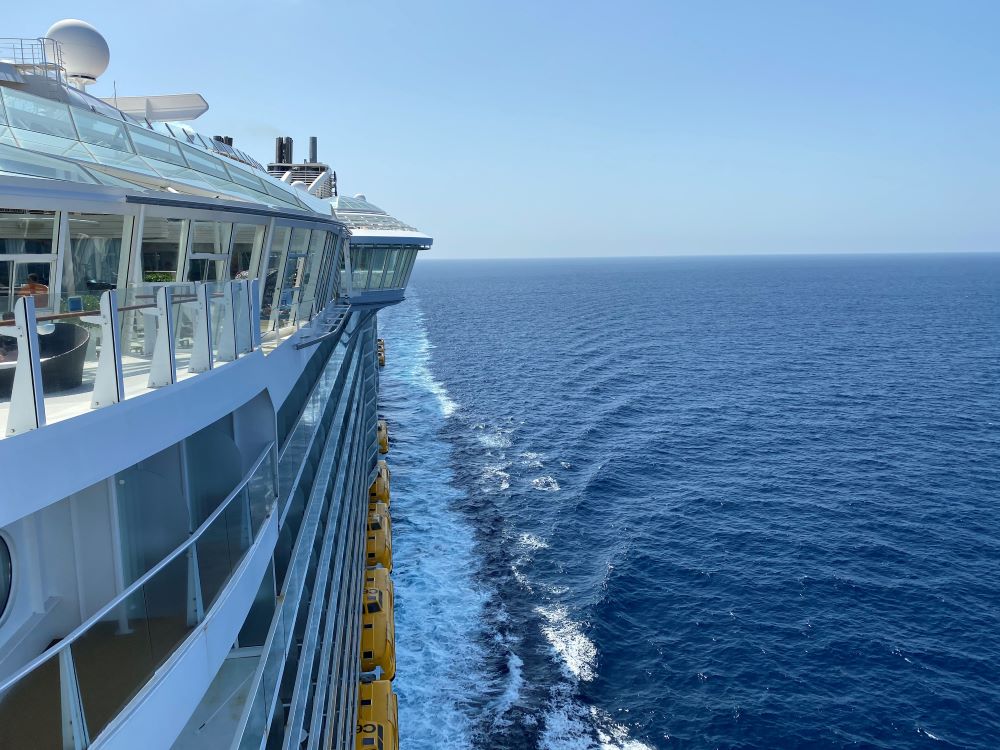No sector of the travel industry has been as hard-hit by the health crisis as cruising. The well-known pause in sailings, the CDC’s oversight in returning safely, and new protocols and requirements put in place by the cruise lines are things not seen anywhere else in travel.

Yet for many people, cruising is still tied to the pandemic. The early days of the spread — before much was known about the virus, nor were protocols in place to prevent illness — hit cruises hard and made headlines. The pause in sailings and changes made to sail safely were no doubt needed.
What we’re seeing now, however, is that the changes made by cruise lines are keeping passengers healthy, even through one of the biggest waves of the virus.
In a video posted to YouTube, Royal Caribbean Group CEO Richard Fain said his company (which consists of Royal Caribbean, Celebrity, and other cruise lines) has sailed with over 500,000 guests. Among those guests, there have been a total of 141 cases according to Fain.
In other words, despite sailing during the sharp rise of the Delta variant, only 0.028% of passengers saw cases (99.972% did not).
“We wanted to show in a tangible way how safe and healthy cruising is,” Fain said in the address. “We’re doing that today, not by theory, not by predictions, but by actual operations. Already two-thirds of our capacity is operating. We’ve carried over half-a-million guests, and only had 141 cases among those 500,000 people.”
“As we have always said, there will be cases aboard a ship, just as there are cases on shore. But because of our protocols, there haven’t been any big outbreaks.”
Few Cases Despite the Rise of Delta
Of course, this is good news for not just Royal Caribbean, but for the cruise industry as a whole.
When cruises returned beginning in late June, optimism was high around the world. Vaccines were becoming widely distributed while the number of cases had plummeted, hitting a new low. It looked like the worst of the crisis was over.
That was before the Delta variant took hold in the United States. Just as cruising started its comeback, cases began rising. From an average daily case count of about 13,000 per day, Delta caused a massive spike to more than 160,000 cases per day. Even today, the U.S. continues to have more than 100,000 cases per day.
Despite that, Royal Caribbean has proven that it is possible to cruise and do so safely. It shows that the protocols put in place have arguably undergone the hardest real-world test possible and cruise passengers should have confidence they work.
Falling Cases a Positive Trend As Well
As cases come down on land, there are also signs that it is making sailing even safer. The CDC tracks potential cases on cruise ships, assigning a color status based on the situation reported on the ship during the past week. Any color other than “green” indicates there was at least one potential case on a ship within the previous seven days among either passengers or crew.
On that front, the number of ships with “non-green” status is currently at one of its lowest points since the Delta surge. Currently 26 of 79 ships (33%) tracked are either “orange” or “yellow” status. That figure is down from 52% ships at the end of August.
That may sound high, but given that a single case can lead to a status change for a ship for a week or more, a high percentage of ships as orange or yellow doesn’t mean there are a high number of cases. And based on the information shared by Royal Caribbean, the number of cases found seem to be small and isolated thanks to protocols.
Protocols Doing Their Job
There’s no doubt that the health crisis is not over. The CDC continues to recommend that unvaccinated passengers and passengers at risk for severe illness (no matter vaccination status) not sail on cruises.
And cruise lines aren’t likely to take down the protocols regarding vaccines, testing, and masks anytime soon. The good news is that the data from Royal Caribbean points to cruising being able to navigate a world with the virus while also limiting the number of cases.
Most modes of travel simply don’t require its guests to be vaccinated if eligible and require negative tests prior to arrival. That’s in addition to distancing, masking, and other rules onboard. So far, it seems those measures are doing a great job in keeping passengers safe.













